Vendors weigh in on the real ROI behind HIMSS exhibition efforts. From “meaningful conversation” metrics to the pros and cons of in-booth entertainment and décor, most have come to realize that the conference is a can’t-miss opportunity worth the all-too-real financial risk.
By @JennHIStalk

HIStalk readers have historically not shied away from airing their HIMSS-related grievances. Whether it’s booth babe backlash, sales reps who refuse to make eye contact, or the delicate balance of staying in the good graces of HIMSS organizers, there has been ample dissection of the health IT industry’s largest tradeshow since HIStalk began covering it 13 years ago.
Yet for all the back and forth, conference attendance has grown impressively. Exhibitor numbers seem to have remained steady despite show-floor grumbling about the cost of just about everything. Atlanta, New Orleans, and San Diego have been scrubbed from the conference city rotation due to constraints in their conference hall and travel logistics and Chicago was axed because of a hotel room pricing spat, leaving Orlando and Las Vegas as the only cities capable of accommodating the massive amount of infrastructure necessary to house its sprawling square footage.
Given the double-edged sword of shelling out big bucks to exhibit with a good chance of getting lost in the crowd, HIStalk reached out to several vendors with varying levels of HIMSS exhibition tenure to gauge their return on investment assessment. From first-time exhibitors to those who’ve joined the fray for the last 20-plus years, most have come to realize that the event is a necessary evil that they will endure — some more eagerly than others — for the foreseeable future.
Setting Measurable Goals Makes the Difference
Determining ROI for an event like HIMSS can be tricky given the long sales cycle for many vendors and the hard-to-quantify benefit of relationship building. And then there are the add-ons. In addition to the standard HIMSS booth pricing — which starts in the $4,000-$5,000 range depending on HIMSS corporate membership status — there are costs associated with extras like chairs, carpet, trash cans, and power, not to mention travel and lodging, advertising and marketing, signage around the show floor, and after-hours events.
Some companies, like 20-plus year exhibitor Billian’s HealthDATA (acquired earlier this summer by Definitive Healthcare), base ROI on concrete goals such as generating a certain number of prospects and closing enough sales to cover expenses for the show.

Others, like Stericycle Communications, lean toward the number of “meaningful” conversations conducted on the show floor. “Ahead of each HIMSS, we set a target for the number of deep, needle-moving conversations we want to have,” says Colin Hung, vice president of marketing at Stericycle, which has exhibited for the last four years. “These conversations could be with clients, prospects, potential business partners, suppliers, and even potential employees. We do look at other metrics like conversions and booth visitor sales generated, but it’s the meaningful conversations metric that really determines whether or not the conference was successful.”

Some exhibitors, like LogicStream Health, see ROI more in terms of generating “new opportunities and interactions with prospects currently in our pipeline, which we expect to turn into new customers and additional revenue,” according to Scott Olson, director of marketing. The company, which exhibited for the first time in 2016, is planning to exhibit again next year. Olson adds that, “Because of the effort we put in on the front end in 2016, we easily justified the expense and expect an even better return on our 2017 investment.”
The Consequences of Taking a HIMSS Break
While none of the vendors interviewed would disclose hard financial figures, all have found their presence at HIMSS to be enough of a worthwhile venture to justify exhibiting year after year. Not one company interviewed has taken a year off from exhibiting. That steadfastness may have more to do with HIMSS incentives (and disincentives) than any hard and fast financial gain directly tied to contracts signed on the show floor.

“We do not plan to stop exhibiting at HIMSS,” says Hung, who adds that the association’s points system plays into that decision. “The points system governs how vendors select their booth space for the following year,” he explains. “Vendors earn points for various activities related to HIMSS – paying on time, booking accommodations in the hotel block, being a sponsor, booking larger booth space, etc. Points are cumulative and skipping a year cuts deeply into your accumulated points.”
Readers may remember that Cerner, which declined to comment for this story, stopped exhibiting on the main show floor for three years, citing a marketing environment that it felt was not conducive to showcasing new technologies and attracting clients. It returned in 2012 due to customer demand, occupying space on the exhibit floor that some felt was in direct correlation to the length of its hiatus.
“It is a given to exhibit at HIMSS,” reiterates one healthcare executive whose company will exhibit in 2017 for the ninth year in a row. “Clients expect to see us there. However, with our marketing budget, it’s also a trade-off. The tremendous costs equate to a significant expense, which takes away from attending other opportunities. We see HIMSS as a necessary evil. We are exhibiting at HIMSS17, but due to the exorbitant costs, we’re reducing our footprint to ramp the ROI in our favor. We may spend more relationship-building time outside of the HIMSS environment.”
The Bigger the Better?
The aforementioned executive may be the exception to the rule when it comes to downsizing exhibit space, though he does clarify that, “Regardless of size, a well-designed booth with furnishings that are comfortable yet attractive and a correct flow is equally important.” The majority of companies interviewed for this story have found value in expanding their show-floor footprint.
“Over the years, we went from a 10×10 booth to a 20×20,” says Joyce Metzer. Now retired, she managed Billian HealthDATA’s presence at the show for over two decades. “The extra space and seating allowed us to have face-to-face meetings with clients and prospects, and we were better able to accommodate attendees who wanted to see demos. Bigger booths, more seating, and more stations for doing demos is critical. Furnishings also play a big role in showing off the fact that you have money to spend on making your customers and prospects comfortable.”
LogicStream will expand its booth next year, and Olson is eager to see how much of a difference it makes. “Our booth was crowded last year because of all the traffic we drove, even being in the back corner of the main floor,” he says. “There’s a chance we missed some walk-up conversations because of the number of people we had at any given time. With a bigger presence this year, our expectation is that we’ll have more room for demonstrations of our solutions.”

Some exhibitors, however, just don’t see the value in the extra square footage. “Granted, you don’t want to be too small such that no one can find you,” says Greg Chittim, vice president of strategic marketing at Arcadia Healthcare Solutions, which has been a HIMSS exhibitor for 10 years. “But I think our customers would rather we spend our money on our products and their experience versus a second floor to our booth. That being said, we try to draw people in with eye-catching visuals that are light on the latest buzzwords and stock photos of happy doctors and friendly experts who actually execute our programs rather than people who just sell them.”
Hung, who has been to HIMSS 10 times, agrees – somewhat. “I honestly don’t think there is any difference between a 10×10 versus a 10×30,” he says. “When you are in a booth that small, you won’t be able to cut through the noise. When you get to a 20×20, that’s when you’ll get a little bit of attention, but you still have to work hard to get business. It’s not until you cross 2,500 square feet that the size of the booth suddenly makes a difference. When you have a space that size, people notice. If you aren’t able to afford 2,500 square feet, I think you’re better off going with a smaller booth and investing your dollars in other aspects of HIMSS.”
It’s What’s in Them That Matters
No matter how big the booth may be, it’s what’s in them that counts in terms of attracting passers-by and making invited guests feel comfortable. Depending on the service or technology offered, many vendors have taken to offering the aforementioned demos and in-booth presentations featuring high-profile customers.
“Presentations can be effective if you have a lot of clients or partners who attend, and if you’re willing to make the effort to market them consistently in the four weeks leading up to the show,” Hung explains. “If, however, you are counting on people just stopping in, I think you’ll be in for a very lonely HIMSS experience.”
Chittim believes that offering something compelling at the booth will help to keep the crickets from chirping. “Bringing something interesting absolutely makes a difference,” he says. “We focus on really compelling data visualizations presented like an art gallery, which does an amazing job of drawing folks from all backgrounds in for a second or third look. Entertainment that has nothing to do with healthcare or our core business is useless from my point of view.”
Hung is of the same mindset and believes that the days of having entertainers such as magicians, jugglers, and game show hosts at HIMSS are long past. “These types of entertainers attract and repel an equal number of booth visitors, in my opinion, and are thus a waste of money. I never find I have time enough at HIMSS to stand and watch a magician perform. I’m always rushing off to the next meeting. I know many fellow HIMSS attendees have similarly packed schedules.
“Having a good-looking model, male or female, in your booth is a complete turn-off,” Hung adds. “I honestly can’t understand why a company would hire a non-employee just to stand in the booth to look good. Not only is it incredibly sexist, but it insults the intelligence of attendees. This form of in-booth entertainment definitely has an impact and it’s completely negative.”
In-booth entertainment, good or bad, can often add up to one thing – noise. “Due to the nature of our business, we don’t have experience with presentations or in-booth entertainment,” the anonymous executive explains. “What we do have unfortunate experience with is the noise level at HIMSS due to the over-crowding of exhibitors in the given space. Our neighbors on multiple occasions have repetitively exceeded the decibel level specified by HIMSS, resulting in less-than-optimal business environments for us. Although HIMSS attempts to monitor and discipline offenders, this challenge is a reality on the show floor.”
Reeling the Right People In
Aside from the challenges of noisy neighbors, exhibitors have over the years defined what works for them and what doesn’t in terms of attracting qualified decision makers to their booths.
Some avoid giveaways and the “goody grubbers” that go after them altogether. The Arcadia team, for example, has found that giveaways tend to draw in only folks who aren’t decision makers, or even employees of potential customers. “The most successful thing at our booth is showing live demos by real experts – our product team, our technical leaders, and clinicians that have really used the product.”
The LogicStream team has had a similar experience. “We had a drawing for a hoverboard in 2016,” recounts Olson, “but didn’t get much traffic from people just dropping off business cards or stopping simply to get their badge scanned. We haven’t decided if we’ll do a larger giveaway in 2017. Attendees that we talked to were more interested in what we could offer their health system and how we could improve care delivery for their patients and providers.”
While tchotchkes may not work, food and beverage seem to be a no-brainer. “Giving away quality food or beverages is always a hit,” says Hung. “Whether it’s coffee, desserts, candies, mini tacos … attendees always appreciate food, especially when the alternative is a $9 cup of dark water that only looks like coffee.
“It’s really challenging to come up with a giveaway that’s unique these days,” he explains, though he adds that he did notice a lot of buzz around HIMSS16 booths featuring a custom T-shirt station and miniature obstacle course. “Everyone has access to similar tchotchke vendors, and every year those vendors follow the same trends. My suggestion is to avoid grab-and-go giveaways like pens and notepads … anything that someone can just grab from your booth without stopping. Instead, plow your money into a good food giveaway that forces the person to pause at your booth, like coffee or ice cream.”
Metzer has also found food and beverage to be the quickest way to the hearts of attendees. “Any kind of food or drawing for a gift will definitely increase traffic,” she says. “We discovered that having a cocktail hour with a drawing at the end of show hours brought in a lot of customers and prospects. The customers would tell the prospects how our product helped them do their jobs, and how easy it was to use the product.”
Due Diligence for Decision Makers
Marketing initiatives, whether they be focused on scavenger hunts, giveaways, baristas, or bartenders, are all designed to do one thing – get decision makers into booths and keep them there. As anyone who’s ever attended HIMSS knows, getting the attention of the C-suite can be challenging without the proper due diligence.
“They key to HIMSS is to invest the time and effort ahead of the conference to book meetings rather than expect walk-ins,” says Hung. Such due diligence is what helped keep the Billian’s HealthDATA booth humming year over year. Metzer says that, on average, 25 percent of booth visits were made by decision-makers, a figure driven by the sales and marketing team’s pre-HIMSS push. Olson recounts that about half of LogicStream’s drop-in visitors were of the decision-making caliber, with the rest being students, vendors, investors, lower-level health system employees, and media.
“Too often,” adds Chittim, “the real decision makers are hounded as they walk the show floor, so are understandably protective of their time and attention. Based on the fact that we’re showing something that is detailed and real versus things that appear to be vaporware, we often have a junior person come first, but they typically bring a real decision maker back with them.”
Time to Sign on the Dotted Line
The health IT sales cycle is not a quick one, and while vendors may use the HIMSS conference as a means to amplify news of a recently signed contract, it is not the type of event that lends itself to initial meetings one day and contractual agreements the next.
“HIMSS is definitely a long-term investment,” says Hung, adding that Stericycle can trace almost 80 percent of its technology partnerships back to a meeting or discussion at the show. “It’s very rare that we meet someone at HIMSS for the first time who buys in the same year. It usually takes two or three HIMSS meetings along with other touch points before a business relationship is cemented.”
Metzer puts the Billian’s HIMSS sales cycle at less than two years, while Chittim says Arcadia’s is six months or less, with 5 percent of total sales being traced directly back to the conference. The variety of times and percentages certainly seems to add to the complexity of attempting to define HIMSS ROI.
Getting Ready for Orlando

Despite the opaque accounting, vendors are already getting their ducks in a row for HIMSS17. “Between the follow-up work and evaluating the 2016 experience, and then looking at increasing our 2017 presence, it’s quite a task to manage and prepare for,” admits Olson. “Next year, we’ll bring a larger team and have a larger booth. Along with that comes bigger goals and a higher expectation of return from the conference.”
Stericycle is also planning to put more of its team members on the show floor. “It’s so valuable for our product team to see what’s happening in the industry and for them to interact with clients and prospects directly,” says Hung. “There’s no better place for that than HIMSS.”
Chittim is on the same page as his exhibitor peers, adding that, “We try to be as conservative as possible with our marketing dollars, but it’s hard to pass up an opportunity to go big in a time and place that has all of our competitors and many potential customers in one place. We’ll be right by the HIMSS17 front door with a new data gallery, new product demos, and a number of clients presenting at our booth and at HIMSS broadly. We’re already looking forward to the week even though it’s six months away.”




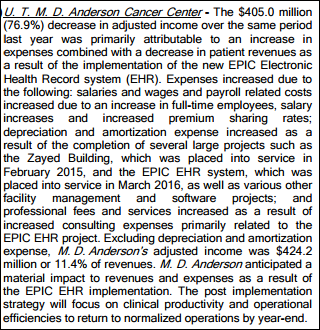





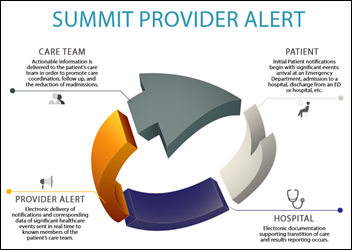

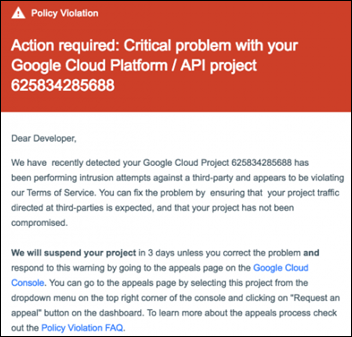

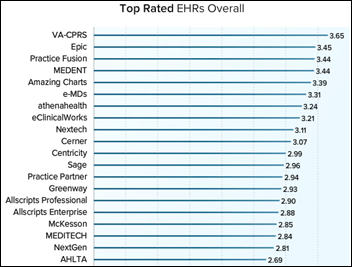

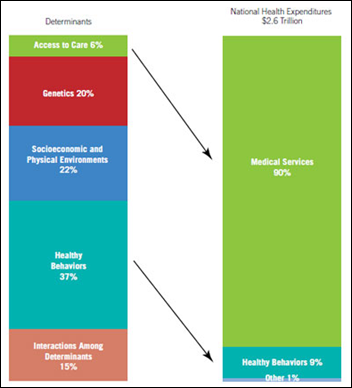





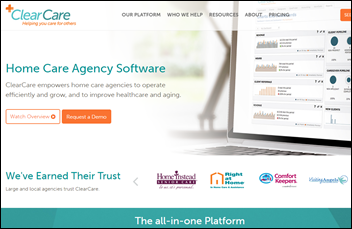
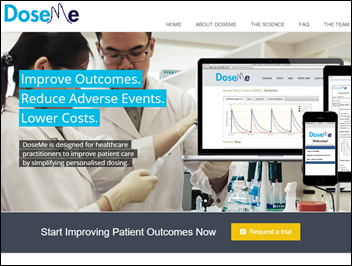
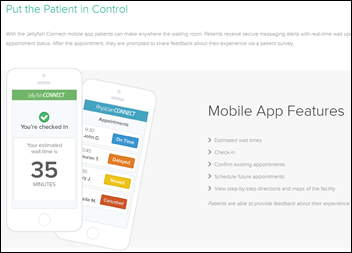






































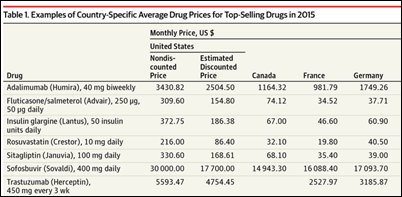
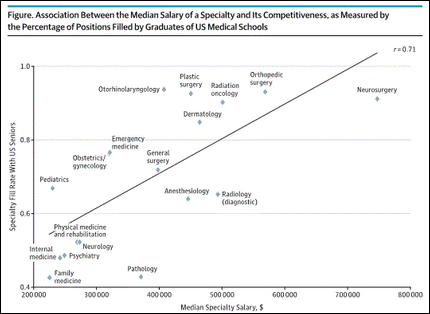










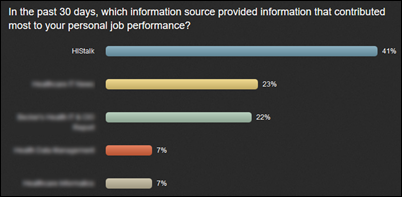







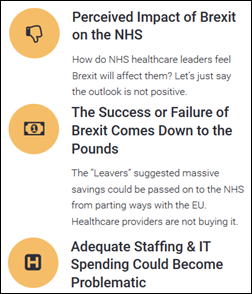




"most people just go to Epic" that's a problem because then EPIC becomes a monopoly in healthcare, if it isn't…